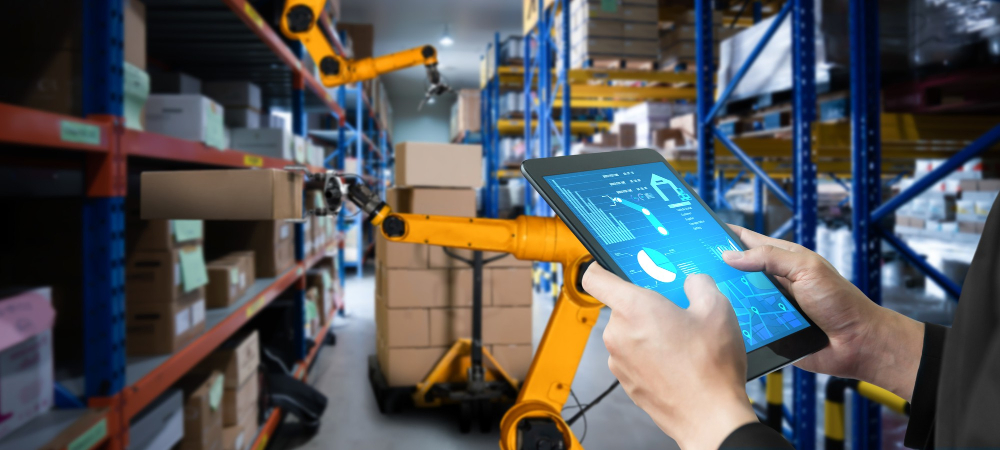Proper installation including provisioning, commissioning and training is critical as you add new technologies and capabilities to your warehouse
You may have been to this show before. A sales team makes you an ambitious promise of new technologies which will revolutionize your warehouse and help you extract more value out of your supply chain. Clearly, you want to get this new machinery up and operational as fast as practical without slowing down existing processes. Too often someone hires local, low-cost installers or temp laborers to slot these new systems into available floor space as quickly as possible, not thinking of the consequences. Sure, there may be money saved in getting everything up and running fast, but folks may have failed to notice at the onset there’s faulty set-up, dangerous wiring or an ergonomic challenge that could put your facility and its people in danger or put a kink in your throughput. A series of seemingly beneficial shortcuts may have left you at risk and your whole operation vulnerable.
All eyes are on you for a clean install, and you’re only as good as your last project, so plan with rigor. The process for augmenting your warehouse with new technologies and systems is a time for tremendous reflection that can have significant effects on the supply chain that follows. Whether you’re onboarding automated guided vehicles or new picking tools, integrating Internet of Things (IoT) solutions or collaborative mobile robots, the methodical steps you take to ensure the install goes smoothly will undoubtedly have ripple effects on your program going forward. As we’ve discovered consistently with our most informed clients, the success of the install hinges on strategic alignment and project management plus proper provisioning, commissioning and training. These upfront activities provide a firm foundation and translate to long-term value propositions in your business in that critical last mile.
Start with strategy. Introducing new technologies into your organization presents an opportunity to streamline and improve your strategic oversight of the big picture project and your pull-through via disciplined project management. Have you optimized design and planned successfully for the resources needed for the technology buildout? Have you accounted for key design and execution needs including permitting, licensing and credentials? Ultimately asking yourself both the high-level and practical questions will provide facility operators maximum site efficiencies. You’re even wiser if you set standards more stringent than those required.
It is also important to have a clear gameplan for provisioning, the early stage in the deployment of servers, apps, network components, storage, devices and more. This is the stage that most involves interruptions to your current work flow if you don’t plan accordingly. For instance, sometimes in this stage of the install, you will have to kill electricity to bring on new technologies while others are still running. You never want unsafe practices to prompt a stand-down. Losing even a day’s worth of productivity is a surefire way for people to question judgment or planning skills.
The value proposition of the commissioning stage will allow you to successfully streamline and troubleshoot. Do you really need the controls engineer who has designed the system and written the code to remain in the field on a laptop rewriting ones and zeroes, or can you make needed updates or adjustments from an office? You may find you don’t have to send a high-value engineer to do what field technicians can accomplish. At this point you are on the brink of fulfilling your promises.
After provisioning and commissioning, the act of training will maximize the potential for efficiency while improving safety outcomes. Making sure your staff has the right tools for the right job and that each is trained to use the tools appropriately will pay daily dividends. Make sure you’re accounting for safety and the rules of the Occupational Safety and Health Administration (OSHA) in your battery of training. Is forklift coaching needed? Is your labor leveraging the right equipment for heights?
Ultimately, companies seeking warehouse implementation services should check OSHA’s website and review its own citation history. Citation history is public information and is a good indicator for areas of improvement. Without a robust and comprehensive safety program, the work has the potential to lead to serious injury or death. A site walk-through by the safety team is also very important. Assessing the level of safety knowledge by contractors working through any new technical integration or buildout is essential. After-installation follow-up and aftermarket services will also help close the loop as you inventory if there are spare parts left and account for preventative maintenance. Protect yourself against risk. All your upfront planning will keep your “dark number” of total recordable incidents (TRI) optimized as this affects the success of obtaining bids for future business.
There’s nothing better than glowing feedback from a customer installing new systems as we learned recently from a client showcasing advanced technology in its facilities as they received spot visits from VC investors, strategic partners and other leadership funders. It was evident that a clean install in the showroom added value and provided confidence for future initiatives.
This is what we do every day at NPSG Global as we deliver critical e-fulfillment warehouse implementation services. Our Full Lifecycle Facility design and installation programs assure you the fastest, most efficient throughput of goods. Whether you need a ground-up solution or need to optimize and retrofit an existing operation, we stand ready to help you plan and execute solutions that will get you where you want to go by starting from exactly where you are today.

